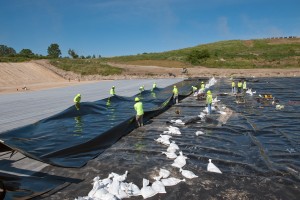 We encourage everyone to make use of the three Rs (reduce, reuse, recycle) and composting to deal with their waste. It’s good for the environment and your peace of mind. But there are some things out there that just need to be thrown away and go somewhere. Luckily, you can throw these things away knowing they aren’t going to the “dumps” of the past. In the days of dumps, it was pretty much anything goes. Dig a big hole in the ground, find an open field, bury your trash in your yard. Today, there’s a lot of time and money being spent cleaning up the mess from those dumps and trying to mitigate the damage they caused to the environment.
We encourage everyone to make use of the three Rs (reduce, reuse, recycle) and composting to deal with their waste. It’s good for the environment and your peace of mind. But there are some things out there that just need to be thrown away and go somewhere. Luckily, you can throw these things away knowing they aren’t going to the “dumps” of the past. In the days of dumps, it was pretty much anything goes. Dig a big hole in the ground, find an open field, bury your trash in your yard. Today, there’s a lot of time and money being spent cleaning up the mess from those dumps and trying to mitigate the damage they caused to the environment.
Dumps are now a thing of the past and are not allowed. We have something much better—highly engineered and heavily regulated landfills. As builders and operators of landfills, we do everything we can to make sure they are a safe place to put your trash. Some people still use the words “dump” and “landfill” interchangeably, but there really is a BIG difference. In an upcoming blog post, we’ll provide a more detailed description of how landfills are built and maintained. For now, though, here are a few of the differences between the dumps of the past and the landfills of today:
- Landfills are regulated. While dumps were operated haphazardly, sanitary landfills must meet minimum standards of design and operation set by the U.S. Environmental Protection Agency (and in Michigan more stringent rules) to serve the important purpose of protecting the environment. And then there are companies like Granger that think it is important to go beyond the minimum standards.

- Landfills are engineered and constructed. Unlike a big hole in the ground or open field, landfills are planned and built using proven engineering standards. The process to construct a new section of a landfill, called a cell, is one that is complicated, time-consuming and expensive. Cells need to be planned well in advance to make sure space is ready. Granger, unlike many other landfill owners, employs its own engineering staff to ensure the highest level of care in this process.
- Landfills are maintained. Granger associates (and staff at other landfills) are responsible for performing tasks that limit the impact of the landfill on the nearby community. This includes spraying dirt roads in the landfill with water to keep dust down, controlling blowing trash with the use of special fencing (and crews who pick up windblown trash), minimizing odors using an odor control system and covering trash at the end of each workday (to control odors, deter animals and diminish blowing trash). This is a daily cycle, continuously reviewed to look for areas of improvement. These operations are periodically reviewed by the Michigan Department of Environmental Quality to assure rules are being followed.
- Landfills are monitored. Though landfills are designed and built to keep materials inside cells with a system to collect and remove liquids from the landfill for treatment, testing is still conducted at landfills to ensure the system is performing properly. Granger uses a third-party consultant and lab to test groundwater and surface water on a quarterly basis.
- Gas from landfills is collected. When trash decomposes over time, it creates landfill gas. With old-style dumps, landfill gas was allowed simply to be released into the air. In landfills like Granger’s, gas is pulled out of the landfill using a system of pipes built into the waste. At Granger landfills, we go one step further, putting the gas to a greater use as a source of renewable energy to generate electricity. We were actually the first to bring this technology to Michigan in 1985. How cool is that?
 So now you know the difference, know where your trash goes and how it is handled. You may also feel compelled to learn even more. We’ve got you covered. Watch our blog for an upcoming post with a photo-filled account of the step-by-step process we use to construct a landfill cell. You can even take it one step further and contact us to schedule a tour. It’s ok. It’s good to be a landfill geek. We know we are.
So now you know the difference, know where your trash goes and how it is handled. You may also feel compelled to learn even more. We’ve got you covered. Watch our blog for an upcoming post with a photo-filled account of the step-by-step process we use to construct a landfill cell. You can even take it one step further and contact us to schedule a tour. It’s ok. It’s good to be a landfill geek. We know we are.
Related Resources
